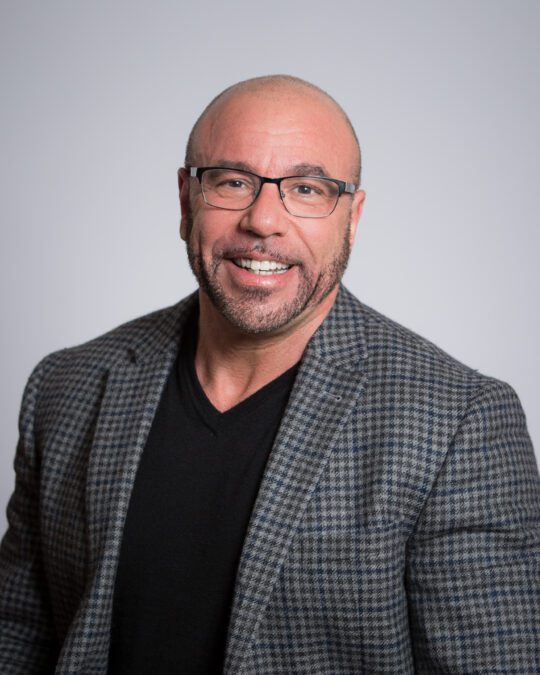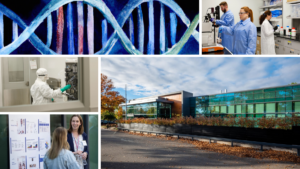
XyloCor Makes Significant Progress in Gene Therapy for Cardiovascular Disease
By Mark Terry
January 31, 2023
XyloCor Therapeutics, based in Wayne, Pa., recently announced its Phase I/II EXACT trial has wrapped the Phase II portion of the study. The trial was evaluating the company’s lead gene therapy candidate XC001 (encoberminogene rezmadenovic) in patients with refractory angina.
Al Gianchetti, XyloCor’s President and CEO, took time to discuss the company and its progress with BioBuzz.
The company was originally founded by Ronald Crystal, M.D., the Bruce Webster Professor and Chairman, Department of Genetic Medicine at Weill Cornell Medical College and Director of the Belfer Gene Therapy Core Facility, and Todd Rosengart, M.D, Professor and DeBakey-Bard Chairman, Department of Surgery, Baylor Medical College; Professor of Heart and Vascular Disease at the Texas Heart Institute.

Gianchetti noted that the technology was licensed from the Weill-Cornell University Medical Center around 1993 when Crystal and Rosengart were both at Weill-Cornell after leaving the National Institutes of Health. “Crystal focused on gene therapy and Rosengart focused on ways of revascularizing the heart in people with coronary artery disease,” Gianchetti says. “They came together and found that gene therapy might be a way to get VEGF to stimulate the blood vessels in the heart. I joined in 2016 as the first CEO, so we’re building on decades of their work.”
Crystal and Rosengart conducted early clinical studies on a less-potent version of the therapy compared to XC001. The company originally planned to initiate the clinical study of XC001 in March 2020, but the COVID-19 pandemic shut down any elected surgical procedures.
XyloCor was finally able to begin treating study participants and Gianchetti says, “We did get it done. Patients were very eager to get into the trial. We finished Phase I in 2021 and started Phase II shortly afterward and finished in the middle of 2022. Now we’re reporting on those results.” The company is still following patients in the Phase II trial for another 12 months.
Chronic refractory angina happens when the heart muscle doesn’t receive enough oxygen. This causes chest pain and is typically caused by atherosclerotic plaques blocking the coronary arteries. Refractory angina occurs with chronic angina patients who are symptomatic even after receiving stents or bypass surgeries and are no longer eligible for additional procedures.
Vascular endothelial growth factor (VEGF) is a family of molecules that promote blood vessel growth. The first gene therapy to be approved by the FDA was Spark Therapeutics’ Luxturna (voretigene neparvovec) to treat an inherited retinal disease that causes blindness. It uses an adeno-associated virus (AAV) as a vector to deliver copies of the RPE65 gene directly into the eye.
Gianchetti told BioBuzz, “VEGF therapies for the eye are for when there are too many blood vessels, and there’s an overproduction of VEGF and you’re trying to control it. In our situation, we’re giving it locally in the heart.”
That it is given directly into the heart is a significant factor. One of the reasons early successful gene therapies such as Luxturna are for eye diseases is because they can be dosed directly into the eye. By directly dosing into the desired tissue, it avoids dissemination to the liver, decreasing tissue exposure, toxicities, and immune reactions. It also allows for significantly lower doses.
XyloCor’s gene therapy is dosed directly into the heart. It uses an adenovirus, which has less transgene exposure than AAV vectors. Gianchetti says there are a handful of other biotech companies working on gene therapies for cardiovascular diseases, but many use intracoronary infusion to dose the patients. “With that, you’re giving an infusion where 90% of the vector will not be taken up by the heart. It’ll go into the liver and give you the potential for off-target effects. And, to get into the heart, you have to give high doses. Companies that are giving intracoronary infusion of their vector are using thousands of times higher doses than we’re using.”
XyloCor’s approach is called minimally invasive administration. A 5-cm incision is performed by a cardiac surgeon, and they inject 15 injections into the myocardial left wall of the heart. Gianchetti says the procedure takes about one hour and the injection process takes about 15 minutes. “Like anything, there are risks for any procedure. However, about 75% to 80% of these patients have previously had bypass surgery, which carries significant risk as well. Bypass surgery is a much more invasive procedure than the procedure for XC001.
XyloCor’s EXACT study data is from the six-month endpoint. The trial hit all safety and exploratory objectives.
“We were very pleased with the results of the trial,” Gianchetti said. “It met the objectives of the trial and warrants moving onto Phase III.”
The patients demonstrated improvements on a physical activity test (exercise time on a treadmill), which is an endpoint regulators use for this type of drug candidate. XyloCor also saw reductions in angina episodes from baseline and cardiac imaging data showed “improvements in ischemic burden and the size of the ischemic area in the heart was reduced after the treatment,” Gianchetti said.
Moving forward, the company hopes to initiate a Phase III trial. They also want to launch a Phase II trial of the therapy in patients undergoing bypass surgery. Gianchetti notes that cardiologists often can predict when patients might have an incomplete vascularization after bypass because they have ischemic areas that won’t be repaired by the bypass graft. They’ve found significant interest from cardiologists and cardiac surgeons who believe the therapy would be “ideal in those patients. While the surgeon is performing the procedure, they would give this drug as a supplement to the bypass to increase the probability of positive results.”
A Phase III pivotal trial and an additional Phase II trial take considerable resources. Gianchetti says, “We have to raise money. We think there’s a strong rationale for both. We’re currently in discussions with potential strategic partners, pharma companies, and also in discussions in parallel with investors. So we could go either pathway at this point for developing the drug. We think this drug should be developed and go into Phase III. We can do it on our own after we raise money, or we could find a strategic partner. We’re looking at both options.”
Meanwhile, there are about 75,000 patients per year who are referred for percutaneous coronary intervention (PCI) or bypass surgery who are turned down because there’s nowhere to place a stent or perform a bypass. There are also another 1.5 million patients who struggle with the disease even after bypass whose lives are limited by chest pain caused by angina and the fear that the pain is actually a heart attack.
“Being able to address an unmet need like this in people who have nothing is really what it’s all about,” Gianchetti said.
- About the Author
- Latest Posts
Mark Terry is a freelance writer, editor, novelist and ghostwriter. He holds a degree in microbiology & public health and spent 18 years in infectious disease research and clinical and research genetics prior to his transition to a writing career. His areas of expertise include biotechnology, pharma, clinical diagnostics, and medical practice management. He has written literally thousands of articles, as well as market research reports, white papers, more than 20 books, and many other written materials. He currently lives in Michigan with his family.








